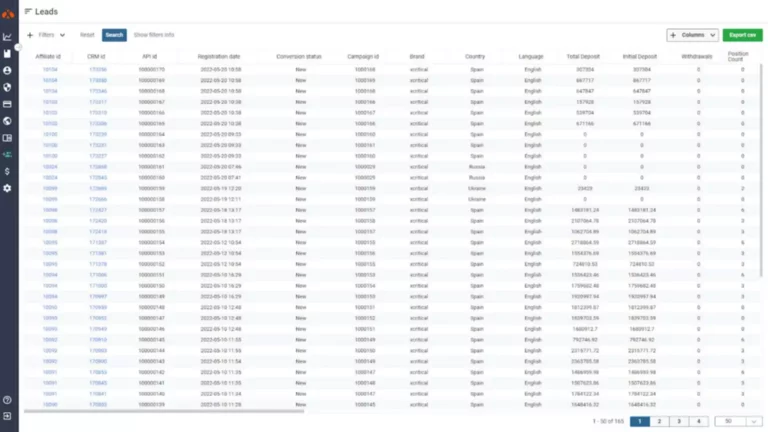Content
A comprehensive cost analysis helps firms understand the total cost of ownership, ensuring https://www.xcritical.com/ they select systems that deliver value without overspending. Transparent pricing structures can prevent unexpected costs, allowing firms to allocate resources effectively and ensure sustainability. This guide breaks down everything you need to know about OMS and EMS, their unique advantages, and why their synergy is a game-changer for trading efficiency. Whether you’re a seasoned trader or new to financial markets, understanding OEMS can enhance your operational performance and ensure you’re better prepared to navigate the evolving trading landscape in 2025. An order management system in trading is a specialised software platform that helps traders and financial entities manage the entire lifecycle of trade orders.
Key Questions to for the Top OMS Providers
The OMS supports portfolio management by translating intended asset allocation actions into marketable orders for the buy-side. An OMS executes trades through a software system using the Financial Information eXchange (FIX) protocol. FIX is an electronic communications protocol used to share international real-time exchange information related to the trillions of dollars of securities Payment gateway transactions in circulation in markets.
Top Trade Order Management Systems (OMS)
TOMS often needs to integrate with multiple external systems, such as electronic communication networks (ECNs), market data feeds, and clearing houses. TOMS synchronizes front-, middle-, and back-office operations with real-time electronic and voice trading what is order management system in trading capabilities. The platform enables immediate updates on trade executions, positions, and portfolio statuses, allowing firms to stay agile and respond to dynamic market shifts with precision and speed. An order management system should seamlessly handle multiple asset classes (stocks, bonds, derivatives, etc.) and various order types (market, limit, stop, etc.), catering to diverse trading strategies. The assessment phase involves identifying diverse requirements, ensuring the system accommodates various asset classes, and aligning with trading strategies.
- While buying an “off-the-shelf” OMS may seem like an easy choice for many firms, other considerations come into play.
- The system automates trade execution, ensuring efficient processing and improved accuracy, making it suitable for trading firms managing large volumes of transactions.
- Its global connectivity and robust features make it a trusted choice for institutional investors and trading professionals.
- Businesses can use an OMS to keep track of customer orders from point of sale to delivery and to take care of returns and refunds.
- The system evaluates various factors such as price, speed, and liquidity to ensure that traders achieve the best possible execution under the prevailing market conditions.
- Fixed-income products, such as bonds, are debt securities issued by governments, corporations, or other entities.
What Are The Stages of the Strategic Management Process in 2025

In this blog, we will delve into the workings of OMS trading software and how it plays a pivotal role in buying and selling securities. With Ionixx’s custom Order Management System, you can organize and streamline daily trade workflows across asset classes. As a full-featured OMS, our order management solution offers real-time balances and positions, customizable risk controls, and broad reporting capabilities. An order management system that efficiently helps you stay on top of your clients’ orders is essential for every wholesale business. With the functionality of QuickBooks Commerce’s wholesale online ordering system, you can provide customers the same online experience that they expect from the B2C e-commerce sphere.
Firms should evaluate the level of support offered by vendors, including training, troubleshooting, and system updates. Reliable vendor support ensures that any issues can be resolved quickly, minimizing downtime and maintaining trading efficiency. A proactive support approach also helps firms stay updated with the latest features and enhancements, maximizing the value derived from their systems. The user interface and overall user experience play a critical role in the adoption and effectiveness of OMS and EMS.

EMS, on the other hand, supports rapid trade execution by providing access to real-time data, analytics, and market insights. This allows traders to respond quickly to market changes, securing optimal prices and improving trade outcomes. Together, OMS and EMS empower traders to manage orders seamlessly, reduce errors, and make faster, better-informed decisions in a dynamic market environment. This integration allows firms to operate with greater efficiency, providing traders with a comprehensive view of both pre-trade and post-trade activities. OEMS streamlines trading processes, reduces the chances of errors, and ensures quicker, more informed trading decisions, making it an invaluable tool for firms operating in today’s competitive markets.
Trade Order Management Systems (TOMS) play a crucial role in enhancing efficiency, accuracy, and scalability in financial trading. They integrate various workflows across front-, middle-, and back-office functions, allowing firms to streamline operations and improve decision-making. TOMS supports multi-asset trading and real-time data synchronization, optimizing execution and compliance. Whether you’re managing equities, derivatives, or multi-asset portfolios, these systems offer a range of features, from real-time analytics to automation. Below are some of the top OMS platforms, each offering distinct features and solutions tailored to different market participants and trading styles.
An OMS can be configured to perform pre-trade checks to ensure trades align with risk management policies, such as position limits or portfolio restrictions. In addition, an OMS allows users to modify, cancel, or split orders as market conditions evolve. The system also tracks order history, enabling traders to review and analyse past trades for performance insights or compliance checks. In the financial markets, an order must be placed in a trading system to execute a buy or sell order for a security. These benefits merely scratch the surface of what a trade order management system can offer. The adoption of such a system is not just advantageous; it is essential for traders aiming to make informed, intelligent decisions.
EMS also improves workflow efficiency, automating the process from decision-making to execution and reducing manual effort. With customizable features, traders can tailor the system to fit their strategies, ensuring precise execution and better risk management. It provides access to real-time market data, enabling quicker and more well-informed decision-making, which is particularly valuable in tumultuous market conditions. Moreover, traders can closely monitor the real-time status of their trades, ensuring precise execution, modification, or cancellation of orders as needed. Through instantaneous real-time price streaming, firms leveraging OMSs gain valuable benefits, including streamlined management of orders and optimized asset allocation within portfolios. It allows developers and traders to automate trading strategies and connect to a wide range of markets through APIs.
Get started with QuickBooks Commerce today for a robust order management system built for wholesale growth. For anyone looking to stay ahead in the competitive world of trading, understanding and leveraging these powerful elements of an OMS is not just an advantage – it’s a necessity. Shape the digital future for financial institutions together with United Fintech and our partner companies.
Strong integration reduces data silos and enhances information flow, ensuring traders have a complete view of their operations. This interconnectedness allows for more accurate decision-making and greater efficiency in trade execution, leading to improved overall performance. The benefits of OMS software extend far and wide, transforming the trading landscape by enhancing profitability, customer experience, trading efficiency, and risk management. It is indispensable for traders aiming not only to survive but to thrive in the dynamic and competitive world of finance. The adoption of an Order Management System is a strategic imperative, equipping traders with the tools and insights needed to navigate the complexities of financial markets successfully.
For the vast majority of buy-side investment firms, having a Trade Order Management System (OMS) in place is a mission-critical business requirement. Efficiently manage accounts in real-time, monitor balances, transactions, and portfolios with our dynamic account management system, ensuring precision and agility in financial operations. There are numerous order management software systems to choose from, and it’s not a one-size-fits-all approach.
As each trade transaction is logged, the system employs a sophisticated risk management module. This invaluable tool enables traders to proactively halt unprofitable and potentially risky trades. By adhering to well-defined risk management objectives, traders can maximize profits while minimizing losses. Furthermore, the order management platform maintains a comprehensive record of both active and completed orders, ensuring transparency for all parties involved in securities transactions. The beauty of modern-day business is that brands can reach customers through a variety of channels.
It plays an important role in ensuring adherence to both internal and external regulatory requirements. This ensures that all the securities trades are executed according to the instructions of the asset manager, broker, etc. Customization options often include tailored dashboards, adjustable risk parameters, and specific analytical tools that align with a firm’s unique trading strategies and operational requirements. When choosing and implementing an Order Management System (OMS) and Execution Management System (EMS), several special considerations must be taken into account. Understanding the unique needs of a trading firm is crucial, as different systems may offer various features that align with specific trading strategies. Brokers using OMS can manage large volumes of client orders efficiently, ensuring accurate execution and allocation across portfolios.